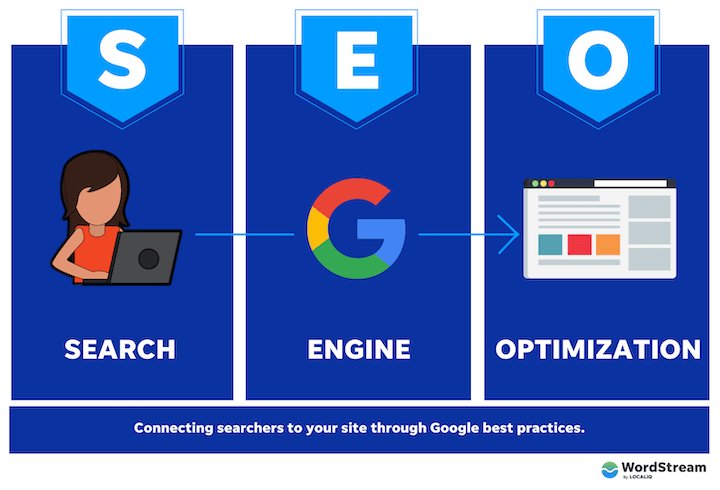SEO Optimization: A Complete Guide to Ranking Higher and Driving Real Traffic

Understanding What SEO Optimization Really Means
When people hear the term SEO optimization, they sometimes think it’s just about sprinkling a few keywords into a website. In reality, SEO (Search Engine Optimization) is a strategic process designed to help search engines understand your website and match it with the right audience. It’s not just about getting more clicks; it’s about getting the right clicks from people who are actually looking for what you offer.
At its core, SEO optimization involves making adjustments to your site so it appears in search engine results when someone types in queries related to your business, products, or services. Think of it as setting up signposts all over the internet that lead back to your website. The better your signposts (optimized content, technical improvements, and strong authority), the easier it is for Google or Bing to recommend you.
The beauty of SEO is that it’s long-term. Unlike paid ads, which stop working the second you stop funding them, SEO builds a foundation. Once your site gains traction in rankings, it can continue to bring in organic traffic for months—or even years—without constant spending. That’s why businesses big and small are investing heavily in this strategy.
Why SEO Optimization Matters for Every Business

Whether you’re running a small local shop, an e-commerce store, or a global corporation, SEO optimization is no longer optional—it’s necessary. The way consumers find information has drastically changed. Instead of asking friends or flipping through a phone book, most people turn to search engines to answer nearly every question. If your website isn’t there, you’re essentially invisible.
One of the biggest advantages of SEO is visibility. The average internet user doesn’t scroll past the first page of Google results. In fact, studies show that more than 70% of clicks go to the top three results. That means if you’re not ranking high, you’re missing out on a massive portion of potential customers.
Beyond visibility, SEO optimization also builds trust. People inherently trust Google’s recommendations. If your site shows up at the top, users assume you’re credible and reliable—even before they’ve read a single word. This perceived authority can give your brand an immediate advantage over competitors who don’t appear in search results.
The Key Pillars of SEO Optimization
To truly master SEO, you need to understand its main components. While strategies evolve as search engines update their algorithms, the three fundamental pillars of SEO remain the same: on-page optimization, off-page optimization, and technical optimization.
On-page SEO deals with everything you control directly on your website. This includes keyword usage, content quality, internal linking, and even how well you structure your headings. Think of it as polishing your storefront window—making sure people see exactly what you offer the second they walk by.
Off-page SEO is all about building your reputation outside of your site. Backlinks (when other websites link to yours) are the bread and butter of off-page SEO. When a trusted site links to you, it’s like a vote of confidence in your content. Over time, this boosts your authority in the eyes of search engines.
Finally, technical SEO focuses on the backend of your site. Search engines need to crawl and index your pages properly, so things like site speed, mobile responsiveness, structured data, and security (HTTPS) are critical. A slow, unsecure, or poorly designed site can tank your rankings no matter how good your content is.
Crafting Content That Drives SEO Success
The saying “content is king” has become cliché in the marketing world, but it’s still true. Without high-quality, optimized content, SEO efforts fall flat. Content is the fuel that powers SEO, and the way you create and present it makes a massive difference in how search engines rank your site.
The first step is keyword research. You need to know what terms your audience is searching for and how competitive those terms are. It’s not always about going after the highest-volume keywords; sometimes, targeting long-tail keywords (phrases with lower search volume but higher intent) can deliver better results because they attract visitors who are ready to take action.
Once you know the right keywords, it’s about creating content that adds real value. Gone are the days when stuffing a page with keywords could trick Google into ranking you higher. Today, search engines use AI and advanced algorithms to measure relevance, readability, and user engagement. This means your content should answer questions thoroughly, use natural language, and keep readers interested.
Finally, remember that content doesn’t just mean blog posts. Videos, infographics, podcasts, and even user-generated content can play a role in boosting your SEO. The more diverse and engaging your content strategy is, the stronger your overall optimization will be.
The Role of User Experience in SEO Optimization
Search engines care about one thing above all else: giving users the best experience possible. That’s why user experience (UX) has become such a crucial factor in SEO optimization. Even if your site is loaded with keywords and backlinks, if users click away because it’s hard to navigate or too slow, your rankings will suffer.
One major UX factor is site speed. Google has been clear that faster websites rank better because users don’t want to wait. Even a delay of a few seconds can cause someone to leave your page and choose a competitor instead.
Another key factor is mobile-friendliness. With the majority of web traffic now coming from smartphones, Google uses mobile-first indexing, meaning it looks at the mobile version of your site before the desktop one. If your site doesn’t look good on a phone, your rankings will take a hit.
Lastly, site structure and navigation play a big role. Search engines and users alike prefer a site that’s easy to navigate. Clear menus, logical category structures, and internal linking all help keep visitors engaged and guide them toward conversions.
Common Mistakes to Avoid in SEO Optimization
While SEO can seem straightforward, many businesses fall into traps that end up hurting their rankings. One of the most common mistakes is keyword stuffing. This outdated tactic involves cramming keywords into content unnaturally, which not only turns off readers but also gets penalized by Google.
Another big mistake is ignoring analytics. SEO optimization isn’t a one-and-done process. You need to monitor your performance, track what’s working, and adjust strategies as needed. Without data, you’re essentially flying blind.
Finally, some businesses focus too much on search engines and forget about humans. Remember, your ultimate goal isn’t just to rank—it’s to attract and convert real people. If your content doesn’t resonate with your audience, rankings alone won’t grow your business.
Future Trends in SEO Optimization
SEO is constantly evolving, and what works today may not work tomorrow. For example, voice search is becoming increasingly popular thanks to smart speakers and mobile assistants like Siri or Alexa. Optimizing for conversational queries is now a smart move.
Another trend is the rise of AI-driven search engines. Google’s algorithm is becoming more sophisticated at understanding context, intent, and natural language. This means your SEO strategy should focus more on answering questions comprehensively rather than obsessing over exact keywords.
Finally, video SEO is gaining traction. Platforms like YouTube are essentially search engines of their own, and videos often appear in Google’s top results. Optimizing video titles, descriptions, and transcripts can open up a whole new traffic source for your site.
Conclusion: Mastering SEO Optimization for Long-Term Growth
SEO optimization isn’t a quick fix—it’s an ongoing process that requires patience, consistency, and adaptability. From technical tweaks to content creation and user experience improvements, every piece plays a role in helping your site rise through the ranks.
The key takeaway is this: SEO isn’t just about pleasing search engines. It’s about creating a better experience for users. When you provide valuable content, ensure your site is accessible and fast, and build authority within your industry, search engines reward you naturally.
So whether you’re just starting out or refining an existing strategy, focus on the fundamentals, avoid shortcuts, and stay ahead of trends. Done right, SEO optimization doesn’t just drive traffic—it drives growth, visibility, and credibility for your brand.



